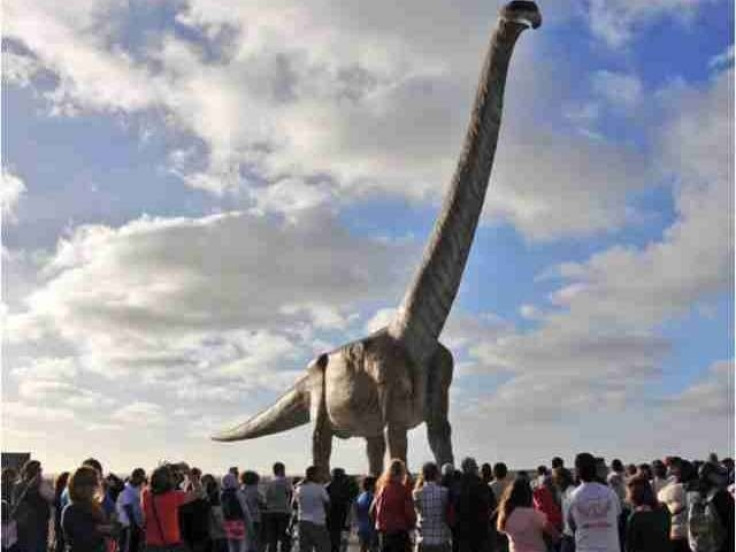Patagotitan mayorum: Earth's biggest dinosaur was a 115ft long herbivore
Scientists say that the mammoth dinosaur weighed around 60 tonnes and was 20 feet high.
The biggest ever dinosaurs to walk the earth, around 100 million years ago, was three times the size of a London bus and as heavy as a space shuttle, according to a new study. A newly named mammoth dinosaur species, Patagotitan mayorum, weighed around 60 tonnes and was 115 feet long and 20 feet high. The fossils of the gigantic plant-eating dinosaur were found in 2012 in Argentina.
Scientists named the dinosaur after the Patagonia region where the fossil of the prehistoric creature was found. Researchers also said that the dinosaur species was the biggest of a group of giant dinosaurs called titanosaurs.
"There was one small part of the family that went crazy on size," said Diego Pol, co-author of the study that was published in the journal Proceedings of the Royal Society B. According to Pol, who works at the Egidio Feruglio paleontology museum in Argentina, when compared to the Patagotitan mayorum, the legendary T-rex and other meat-eating dinos "look like dwarfs."
Despite their size, researchers believe they may not have been all that terrifying. "I don't think they were scary at all," Pol said. "They were probably massive big slow-moving animals. Getting up. Walking around. Trying to run. It's really challenging for large animals."
Scientists analysed samples from fossils of six Patagotitan dinosaurs. Researchers believe that the dinosaurs, found together, is the first evidence that titanosaurs engaged in the social activity, Sky News reported.
The study's lead, Luis Carballido, told The Atlantic that researchers uncovered 200 Patagotitan bones. "The most amazing moment for us was realizing that the dinosaur is not only large, but also more complete than any other titanosaur," Carballido said.

According to Kristi Curry Rodgers, a palaeontologist at Macalester College who wasn't part of the study, the bones indicate that the dinosaurs may not have grown completely before they died.
"It's hard to argue this isn't a big deal when it concerns the (probable) largest land animal ever discovered," University of Maryland palaeontologist Thomas Holtz, who wasn't part of the study, told Phys.org.
However, scientists are still trying to figure out how these dinos came to grow to such a gigantic size. "Maybe someone can find a bigger one," Carballido said. "But I feel like maybe this is the limit."
© Copyright IBTimes 2024. All rights reserved.






